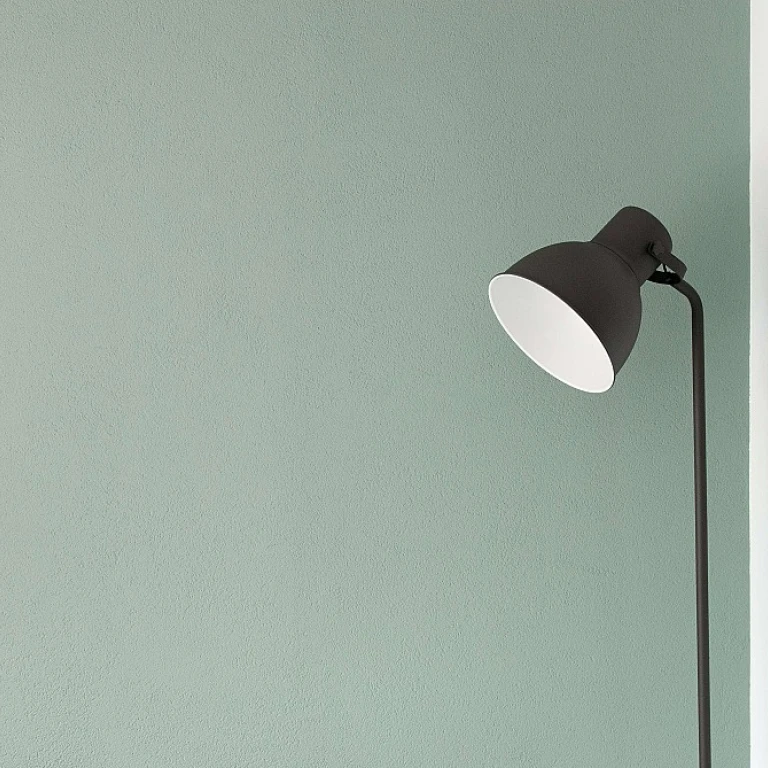
Understanding Sustainable Design
Exploring Sustainable Design Principles
In the ever-evolving world of design, sustainable practices have emerged as a crucial component for driving success. Sustainable design is about making intentional choices that consider the environment, social equity, and economic viability. It's an approach that transcends aesthetic appeal, focusing instead on creating spaces and products that benefit both people and the planet.
Key to sustainable design is the careful selection of materials and resources. This means choosing materials that are renewable, recyclable, and locally sourced to minimize the carbon footprint. Incorporating such materials can significantly reduce environmental impact and enhance the longevity of products and constructions.
Another essential aspect is energy efficiency, which prioritizes reducing energy consumption through innovative design solutions. By incorporating renewable energy sources and designing for natural lighting and ventilation, designers can significantly cut energy costs and foster more sustainable living and working environments.
Waste reduction and management also play a critical role in sustainable design. By designing with waste minimization in mind, design professionals can contribute to reducing landfill contributions. This involves strategies like prefabrication, modular designs, and using materials that can be easily disassembled and recycled.
These foundational aspects of sustainable design are seen in successful case studies, where thoughtful resource management and innovative design solutions have yielded spaces that are both beautiful and environmentally friendly. As we look towards future trends, sustainable design is set to become an imperative rather than an option, pushing the boundaries of creativity and ethics within the design industry.
Materials and Resources
Innovative Use of Materials and Resources
In the realm of sustainable design, the choice of materials and resources plays a pivotal role in creating eco-friendly solutions. Designers are increasingly turning to materials that are not only sustainable but also innovative, ensuring that their projects align with environmentally responsible practices. This approach is crucial in the transition towards a more sustainable future, especially in the post-pandemic era where the demand for eco-responsible design has surged.
One of the key strategies involves selecting materials that have a minimal environmental impact. This includes using recycled or upcycled materials, which help in reducing waste and promoting sustainability. For instance, many design agencies are now incorporating recycled plastics and metals into their projects, offering a second life to materials that would otherwise contribute to landfill waste.
Moreover, the digital aspect of design cannot be overlooked. Sustainable digital services are becoming increasingly important as more businesses move online. Websites and digital products need to be designed with sustainability in mind, ensuring that they are energy-efficient and have a reduced carbon footprint. This involves optimizing website performance, reducing data transfer, and using green hosting solutions.
French designers, in particular, are leading the way in integrating sustainable materials into their projects. By focusing on locally sourced materials, they not only support local economies but also reduce the carbon emissions associated with transportation. This localized approach to material sourcing is a key component of design ecoresponsable.
Ultimately, the choice of materials and resources in sustainable design is not just about reducing environmental impact; it's about creating products and services that are designed to last, offering long-term solutions to the design problem of sustainability. As we look towards the future, the emphasis on innovative materials will continue to grow, shaping the landscape of sustainable design.
Energy Efficiency in Design
Optimizing Energy Use in Design Landscapes
The impact of design on the environment is magnified when energy efficiency is considered. Sustainable design is not only about choosing eco-friendly materials but also about optimizing the energy use throughout the lifecycle of a project. By doing so, designers can significantly reduce the carbon footprint, which aligns with post-pandemic sustainability goals. Here are key considerations for enhancing energy efficiency in design:- Renewable Energy Integration: Incorporating solar panels, wind turbines, or geothermal systems can significantly cut down the reliance on non-renewable energy sources. Such integrations can help offset energy consumption, paving the way for sustainable design that resonates with eco-conscious consumers.
- Smart Technology Utilization: Smart home systems or buildings equipped with intelligent sensors can manage and optimize energy use effectively. These technologies are not only attractive for their energy-saving potential but for their ability to adapt to user needs, representing a key marketing angle post-pandemic.
- Design for Natural Light and Ventilation: Maximizing natural light and ventilation reduces the need for artificial lighting and HVAC systems. Thoughtful placement of windows and open spaces can harness natural resources, making designs more sustainable and cost-effective.
- Energy-Efficient Appliances and Systems: Using appliances and building systems that meet or exceed energy efficiency standards can reduce operational costs and decrease environmental impact, further making sustainable design a compelling selling point.
Waste Reduction and Management
Optimizing Resource Use: A Shift Towards Zero Waste
In the realm of sustainable design, managing and reducing waste is paramount to creating a more environmentally conscious approach. As the movement gains traction, there's an increasing focus on transforming traditional design practices to harmonize with zero waste principles.
One effective strategy involves the concept of closed-loop systems, where every step of the design process, from production to end-of-life, aims to limit waste generation. This approach not only prevents unnecessary disposal but also encourages the reuse and recycling of materials, fostering a sustainable lifecycle.
Consider the importance of long-lasting design, a core aspect of waste reduction. Durability plays a significant role in ensuring that products withstand time, thereby reducing the need for replacements and minimizing landfill contributions. Choosing high-quality, recyclable materials becomes crucial in achieving these goals, tapping into the rich insights offered earlier on material selection.
The principles of sustainable design also emphasize design for disassembly. This methodology revolves around creating products that can be easily taken apart at the end of their useful life, allowing components to be reused or recycled rather than discarded. It challenges designers to innovate, rethink connections, and avoid toxic substances that hinder recyclability.
Moreover, designers are encouraged to integrate energy efficiency into their projects. By optimizing energy use throughout a product’s lifecycle, not only is waste reduced, but the overall environmental impact is minimized. This is closely interconnected with the energy-efficient strategies employed during the design phase.
These waste management techniques are not just about individual responsibility; they have broad implications for the future of design. As more designers and companies adopt these practices, sustainable design's potential to revolutionize the industry post-pandemic becomes increasingly evident, setting a new standard for eco-friendly marketing success.
Case Studies of Successful Sustainable Design
Real-World Examples of Eco-Friendly Design
In the realm of sustainable design, several projects have successfully integrated eco-friendly principles, offering valuable insights for future endeavors. These examples highlight how a thoughtful approach to materials, energy efficiency, and waste management can lead to impactful results.
Revamping Urban Spaces
One notable project involved the transformation of an urban space into a green oasis. By utilizing recycled materials and incorporating native plants, the design not only enhanced the aesthetic appeal but also improved the local ecosystem. This project demonstrated how urban design can contribute to sustainability by reducing the heat island effect and promoting biodiversity.
Eco-Conscious Digital Platforms
In the digital realm, a French design agency developed a website that prioritizes energy efficiency and minimal resource consumption. By optimizing images and reducing server load, the website achieved a significant reduction in its carbon footprint. This example underscores the importance of sustainable digital services in the transition towards environmentally responsible solutions.
Product Design with a Purpose
Another successful case is a product design initiative that focused on creating eco-friendly consumer goods. By selecting sustainable materials and designing for longevity, the project addressed the design problem of waste generation. The products not only met user needs but also aligned with eco-responsible values, showcasing how sustainability can be seamlessly integrated into product design.
Community-Driven Waste Management
In a community project, a collaborative approach was adopted to tackle waste management. By engaging local residents and businesses, the initiative developed a comprehensive waste reduction strategy. This project highlighted the power of community involvement in achieving sustainable outcomes and demonstrated the potential for scalable solutions.
These case studies illustrate the diverse applications of sustainable design across various sectors. They serve as a testament to the potential of design ecoresponsable in addressing climate change and promoting sustainability. As the demand for eco-friendly products and services grows, these examples provide a roadmap for future projects aiming to make a positive environmental impact.
Future Trends in Sustainable Design
Emerging Trends in Sustainable Design
As the world continues to grapple with climate change, the design industry is witnessing a significant shift towards sustainable practices. This transition is not just a trend but a necessity, driven by the urgent need to reduce environmental impact. Here are some key trends shaping the future of sustainable design:
- Integration of Digital Services: The rise of digital platforms is transforming how design projects are conceived and executed. Digital services allow for more efficient resource management and reduce the need for physical materials, aligning with eco-responsable goals.
- Focus on User-Centric Solutions: Designing with the user in mind is crucial. This approach ensures that products and services are not only sustainable but also meet the needs of the end-user, enhancing the overall experience.
- Adoption of Eco-Friendly Materials: The use of environmentally friendly materials is becoming more prevalent. Designers are increasingly opting for materials that are renewable, recyclable, and have a lower carbon footprint.
- Waste Reduction Strategies: Building on waste management practices, future designs will prioritize minimizing waste at every stage of the project lifecycle, from conception to completion.
- Collaborative Design Approaches: Collaboration between designers, clients, and stakeholders is essential for creating sustainable solutions. This collective effort ensures that all aspects of sustainability are considered and integrated into the design process.
- Emphasis on Energy Efficiency: Energy-efficient designs are becoming standard practice. By incorporating energy-saving technologies and practices, designers can significantly reduce the environmental impact of their projects.
These trends highlight the growing importance of sustainability in design. As more design agencies and professionals embrace these practices, the industry will continue to evolve, offering innovative solutions that address the pressing challenges of our time.






